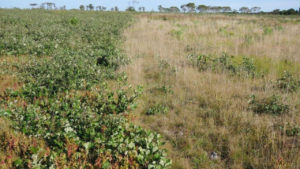Conversion from Forest or Shrubland
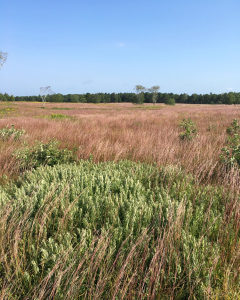
Figure 1. Frances Crane Wildlife Area, 2017. Photo credit: Michael Whittemore.
Conversion of forest or shrubland to sandplain grassland aims to promote a diverse assemblage of target grassland species with a high proportion of warm-season grasses and native forbs, and a low proportion of cool-season grasses and non-native species. This conversion focuses on removing all or most trees and shrubs, disturbing soils to eliminate built up organic material that does not promote grassland plants, and sometimes seeding to promote recruitment of disturbance-dependent grassland species that were not present in the original woodland or shrubland. Conversion of forest or shrubland is the most aggressive and potentially intensive pathway to creating sandplain grassland. However, extensive areas of second-growth forest, now present in the northeast US, create numerous opportunities for conversion to grassland habitats (Raleigh et al. 2003a).
Conversion of forest or shrubland to sandplain grassland requires a variety of techniques to be employed in several phases, and results might vary widely depending on site conditions such as existing vegetation composition and structure, soil legacy effects, weather after restoration, and important management variables, and whether treatments are applied in combination.
Local experience converting forest or shrubland to native species-rich sandplain grassland is limited. Evidence from Frances Crane Wildlife Area in Falmouth, MA offers the most comprehensive case study detailing a full conversion using a variety of management techniques. In addition, Lezberg et al. (2006) report results from mechanically removing overstory oak, combined with planting grassland plant species seeds on Martha’s Vineyard, and Omand et al. (2014) highlight experimental results testing the composition of existing seedbank in forest or shrubland on Nantucket. In this document, we evaluate results compiled from published and unpublished studies and information obtained from interviews with land managers. We focused on the following main questions relevant for sandplain grassland management:
1) What are the necessary phases needed to create grassland from forest or shrubland?
2) What management techniques have been studied?
3) What are the results of management techniques in relation to the goal of creating native species-rich grassland?
4) How can the effectiveness of such management techniques be improved to convert forest or shrubland to sandplain grassland?
We focused on interpreting the main patterns that emerged from examining multiple experiences across multiple sites, with the understanding that responses to any one treatment of a management practice under particular conditions may differ.
Methods
We reviewed 75 sources that described or documented results of management actions in sandplain grasslands. Of these, 32 sources contained information on conversion of forest or shrubland to sandplain grassland, and 11 detailed specific management experiments and case studies. In addition, we interviewed 8 professionals throughout the region about their experiences with conversion agricultural land to sandplain grassland. Literature sources that tested active management treatments were classified by whether they: (A) reduce woody growth, and (B) increased native biodiversity of plants or animals.
We also used the review and interviews to summarize the state of current management practices used to convert forest or shrubland to sandplain grasslands and their effects on: (1) fuels and soils, (2) vegetation composition, (3) vegetation structure, and (4) fauna in relation to important variables. We then suggest ways that the use of such management practices could be improved to decrease woody cover, increase graminoid cover, and maintain and promote biodiversity in sandplain grasslands.
Results
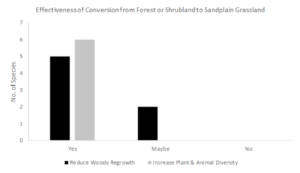
Figure 2. Number of sources that found results that suggest a decrease in woody growth and/or an increase in plant and animal diversity.
Overall, the majority of sources found that most of the management practices reported in the literature achieved desired results (Fig. 2).
Conversion phases and management practices
Conversion of forest or shrubland to grassland involves a removal of woody plants to promote grassland composition and structure—a process of tearing down and rebuilding (C. Buelow, Interview). Conversion of forest or shrubland to sandplain grassland should be conducted in the following three phases: (1) tree removal, (2) soil disturbance and seeding, and (3) return to maintenance regime. We reviewed five management examples in which techniques used to convert forest or shrubland to sandplain grassland were studies. The examples included variations of vegetation removal, burning, wood removal, soil disturbance, and seeding.
Preexisting vegetation
Predominant existing plant cover in forest or shrubland in northeast coastal upland areas is composed of pitch pine (Pinus rigida), eastern white pine (Pinus strobus), American beech (Fagus grandifolia), and oak species (Quercus spp.). One of those oak species, scrub oak (Quercus ilicifolia) is a fast-growing and tall shrub and that can quickly invade grassland and heathland. It can be expensive to continually manage (Raleigh et al. 2003a), although areas of scrub oak are themselves high-priority targets for conservation management (Swain 2016, NYNHP 2018).
Phase 1: Tree and Shrub Removal
Vegetation removal
Mechanical vegetation removal is the most common practice for removing trees and shrubs during the conversion to sandplain grassland. Vegetation removal may then be followed by herbicide application. Typically, large trees are logged and tree saplings and woody shrubs are mowed and/or treated with herbicide.
At Frances Crane Wildlife Area, tree shears were used for large trees and Brontosaurus mulchers and Hydro Ax flail mowers were used to remove invading saplings and shrubs.
Lezberg et al. (2006) mechanically removed overstory oak. They harvested overstory trees at ground level in clear-cut and savannah areas using a feller-buncher, while shrubs and small trees were mowed with a mechanical brush mower. Oak stump sprouts were cut with a mechanical weed brush cutter in summer to delay regrowth of oak trees. Mechanical removal of trees and shrubs, in combination with seeding increased cover of native forbs and ed minimal increase in non-native forb cover.
Combining herbicide application with other management methods can reduce the amount of herbicide used and allow very targeted application on non-native or disturbance-tolerant shrubs that persist after other management practices (J. McCumber, Interview). Some herbicides prevent shrub re-sprouting. For trees and shrubs, a phenoxy-based herbicide is often used. For non-native invasive trees and shrubs, 268 Picloram or glyphosate will typically kill the whole root system (Raleigh et al. 2003a). Krenite herbicide has been used to target scrub-oak (Quercus ilicifolia) (Dunwiddie 1990). One of the greatest challenges of using herbicide is public concern, especially when applied to native species, which can limit this technique in native shrub conversions (G. Motzkin, Interview). At the Frances Crane Wildlife Area, herbicide was applied to select areas after mechanical removal to control non-native invasive species.
Prescribed fire
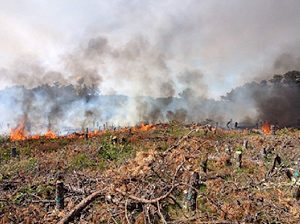
Figure 3. Cut-and-burn of pitch pine forest at the Cape Cod National Seashore Marconi Area to create more open lands. Photo credit: Lena Champlin.
Prescribed fire has been used at some locations on the Cape Cod National Seashore (CCNS) to convert second-growth forest to grassland (Fig. 3). In the Marconi area, burning was applied with some success. Prescribed burning is most effective for conversion when paired with other management. D. Crary (Interview) suggests that mechanical cutting prior to burning expedites the conversion timeline. Further, some forests with dense understories need brush cutting before burning to reduce fuel loads to ensure a safe burn (Raleigh et al. 2003b). Even with the successful removal of trees, grassland might not always establish. For example, grassland did not become established in research plots at the CCNS in Truro that were repeatedly burned because of the lack of seed sources (D. Crary, Interview).
Prescribed burning can also be applied to help convert shrubland to sandplain grassland. Some shrub species are fire-tolerant and burning in the summer can be challenging, so burning alone is not usually an effective method to convert shrublands to grasslands (J. McCumber, Interview). Combining burning with other tools such as mowing will increase the speed and potential success of restoration to grassland (D. Crary, Interview).
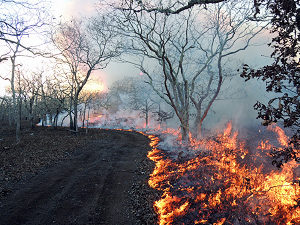
Figure 4. Fire during the fall of 2015 in the Pohoganut section of the Manuel F. Correllus State Forest on Martha’s Vineyard. Photo credit: Chris Buelow.
A growing season burn is often applied if the ecological goal is to change the system, while a dormant season burn (Fig. 4) or management is often used to maintain the system (C. Buelow, Interview). For conversion, summer burns can be the most effective management option to control woody growth because plants have high biomass allocated above ground (D. Crary, W. Patterson III, T. Simmons, Interviews). Dormant season burns can help remove excess thatch and fuels (T. Simmons, W. Patterson III, interviews). When mowing is done before burning in a woody shrubland, the fire can be very intense and shrub cuttings will carry the fire and create a large amount of smoke (J. McCumber, Interview). Depending on location and personnel restrictions, burning post-mowing may need to wait a year to allow some regrowth and therefore reduce the flame lengths, smoke, and fire intensity (P. Dunwiddie, Interview).
Frequency of prescribed fire application can influence fire’s effectiveness in removing tree and shrubs. The first burn top-kills shrubs, making it important that this burn occurs during the growing season, to have the greatest impact (P. Dunwiddie, Interview). Once initiated, burning should continue over time to reduce shrub cover and maintain recruitment of native grasses and shrubs (P. Dunwiddie, Interview). Prescribed burning in shrubland can occur more frequently than grassland because there is more biomass fuel to burn (D. Crary, Interview).
Mowing
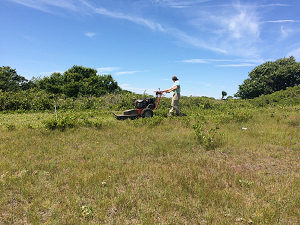
Figure 5. Shrub edge mowing with a DR Field and Brush Mower on Naushon Island. Photo credit: Lena Champlin.
No solid evidence exists that mowing alone effectively removes woody growth in the conversion of forest or shrubland to sandplain grassland. However, when combined with other practices, mowing is often the first step to successful shrub management (P. Dunwiddie, Interview) (Fig. 5). In recently-logged areas, mowing has been used to control residual woody regrowth. At the Frances Crane Wildlife Management Area, deforested areas were mowed two years after logging to help maintain woody growth after conversion. In contrast, however, research in the Middle Moors on Nantucket found that scrub oak had not decreased over time after 20 years of repeated mowing.
Grazing
There is no evidence from recent decades that grazing alone can effectively remove woody growth from forests or shrublands. Research experience on Naushon Island showed that livestock species will not reduce shrub cover in dense shrub patches (C. Neill, Interview). However, varying livestock types can be used for specific components of conversion of forest or shrubland to sandplain grassland, because different grazing animals have differing preferences and tolerances. For example, cattle prefer non-woody species, while sheep will eat more woody plants including poison-ivy (Toxicodendron radicans) and invasive Oriental bittersweet (Celastrus orbiculatus) (Raleigh et al. 2003a). Success in vegetation control by livestock is best achieved when the livestock have been conditioned to graze on plants such as woody species that are not generally recognized as standard forage species. For example, observations have shown that sheep raised in shrubbier areas are more likely to graze shrubs, making it important to maintain local sheep flocks if they will be used to targeted grazing management (K. Beattie, Interview). Goats eat many woody plants and have even grazed on woody bark (Raleigh et al. 2003a). At the Manuel F. Correllus State Forest, sheep sometimes grazed pitch pine (Pinus rigida) slash and also ate scrub-oak (Querus ilicifolia), dwarf chinquapin-oak (Quercus prinoides), and blueberry (Vaccinium spp.) sprouts (Patterson III et al. 2005). Sheep grazing has also been effective at clearing out dense understories of invasive species such as honeysuckles (Lonicera spp.), which in-turn allowed for more effective herbicide treatment and native species seeding (K. Omand, Interview). Grazing of forest dominated by scrub oak at Squam Farm on Nantucket (Karberg and Beattie 2009) and Tom Nevers (Dunwiddie 1986) suggests that sheep can reduce cover, and combining grazing with mowing can further reduce woody growth (Dunwiddie 1986).
The season in which grazing occurs is also an important consideration because vegetation palatability changes, as seasonable and young leaves and shoots produced in the spring can be more palatable to grazing, making spring grazing management important for impacting shrub growth (C. Neill, Interview). Additionally, winter grazing will likely affect shrubs more greatly than herbaceous vegetation because grasses and forbs are already dormant. (C. Neill, Interview).
The stocking rate can influence the effectiveness of shrub grazing. On Naushon Island, however, a high density of grazing cattle in summer had relatively little post-grazing effect on the proportion of shrubs within 0.25-hectare (0.6-acre) enclosures. Rotational grazing is a common method in which grazers are stocked at a defined density and in a confined area, and then rotated into new areas, depending on the rate of defoliation desired. A high stocking rotational grazing technique, with a rest period for previously grazed areas, would facilitate high intensity grazing over a short time frame and therefore may have the largest effect on vegetation structure by encouraging grazers to eat less favorable plants, while reducing the likelihood of over grazing (Raleigh et al. 2003a). On Squam Farm on Nantucket Island, sheep consumed scrub oak, particularly earlier in the season when grazed at higher intensities (K. Beattie, Interview). In that study, 17 sheep were turned out into 33 m x 21 m pastures for 48-hour rotations (Karberg and Beattie 2009). On Tom Nevers Nantucket, 20 sheep were stocked in a 20 m x 20 m pasture for 5-day periods, totaling 70 grazing days (Dunwiddie 1986).
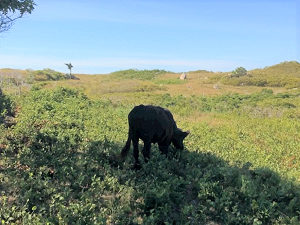
Figure 6. Naushon Island cow reluctantly grazing tips of short Silmax rotundifolua in the shade. Photo credit: Lena Champlin.
Grazing preference can also vary among individuals within a species and between different breeding lines within a species. Several experiments have found that while introduced livestock are unlikely to graze shrubs, offspring born into native grazing will graze more readily on woody plants. The propensity of Naushon-born animals to graze shrubs was observed with cattle grazing catbrier (Smilax rotundifolia) on Naushon Island (Fig. 6, C. Neill, Interview) and with sheep grazing on scrub oak at Squam Farm Nantucket (Karberg and Beattie 2009). Livestock grazing on shrubs can also be a learned behavior achieved by watching others, training through rewards, and increased stocking density to encourage them to consume new plants (T. Simmons, Interview). In addition, differing breeds of livestock have varying preferences and tolerances and thus will graze on different plants (P. Dunwiddie, Interview). On Nantucket, sheep breeds selected to more effectively graze shrubby areas increased the effectiveness of grazing on scrub oak (K. Beattie, Interview). Other factors such as weight, age, stage of breeding, individual health and environmental conditions can influence the efficacy of shrub grazing. For example, after sheering, sheep forage more heavily to compensate for lost heat (Raleigh et al. 2003a), which can influence forage preference and intensity. Because many factors influence how an individual animal grazes, accurately predicting how a particular flock or herd will affect shrub composition can be challenging.
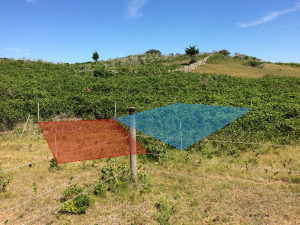
Figure 7. Enclosure experiment on Naushon Island: Red square outlines a plot that has been mowed last 3 years and blue is un-mowed. Both plots start with about 50% shrub area cover and 50% grass along a shrub edge. Mowing makes a significant difference on shrub cover and height. Photo credit: Lena Champlin.
Grazing may be most effective at removing shrubs in combination with other management treatments, particularly mowing (Fig. 7). There are some woody plants that are just not palatable to livestock, or that they will not graze intensively enough to impact composition (T. Simmons, Interview). At Lost Farm Sanctuary on Martha’s Vineyard, the shrub species that sheep did not preferentially graze persisted following extended targeted grazing management (E. Steinauer, Interview). In some cases, after grazing management, the remaining undesirable shrubs can be selectively removed by mechanical cutting or herbicide (D. Foster, Interview). In addition, mowing prior to targeted grazing can increase livestock access to target areas as well as increase the palatability of shrubs. In Tom Nevers on Nantucket, scrub oak that reached 10 to 12-feet (3.0 to 3.6 m) tall was impassable to sheep flocks, so brush cutting was applied to provide access for grazing (P. Dunwiddie, Interview). Mowing and thinning at the Manuel F. Correllus State Forest on Martha’s Vineyard also preceded the introduction of sheep to graze forest dominated by scrub oak. Though grazing may leave some woody plants, when combined with mowing, shrub loads were reduced to a tenth of the initial measurements (Patterson III et al. 2005). In addition, shrubs tend to produce palatable new-growth after mowing, increasing the likeliness that livestock will graze as well as increasing the effect on shrubs by the combination treatments.
Woody debris removal
Some forestry practices leave behind woody debris, which could promote undesirable consequences. Therefore, a removal phase is required after cutting to remove stumps and branches (J. Scanlon, Interview). Removal of woody debris, chipping, and mulching are suggested to avoid adding nutrients to the soil, which can suppress grass establishment and growth (Raleigh et al. 2003b). Excess lumber could be sold for profit, but delivery might not be economical in many places (C. Neill, Interview). Or, lumber piles or mulch could be burned to expose mineral soil for grass establishment (D. Crary, Interview).
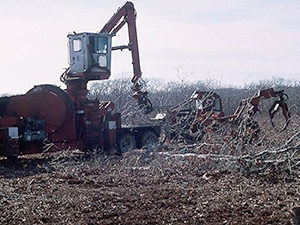
Figure 8. Wood chipping at Job’s Neck forest conversion. Photo credit: Chris Neill.
At the Frances Crane Wildlife Management Area, stumps were ground to two-inches below the surface two years after logging to promote grassland establishment (Fig. 8). At Job’s Neck on Martha’s Vineyard, wood was chipped and removed from the site (Lezberg et al. 2006). Stumps of tree oaks (Quercus velutina and Quercus alba) had to be removed after mowing because they re-sprouted vigorously (C. Neill, Interview). Pitch pine eradication is particularly difficult because the pitch pine is a prolific disturbance-dependent species that produces stump sprouts and epicormic branching when cut. To ensure mortality, D. Crary (Interview) recommends cutting trees three feet above the ground and reburning at a later time. This practice will lead to trunk buds sprouting rather than root buds, and another burn thereafter will often kill the tree, because of the second episode of stress.
Phase 2: Soil Disturbance and Seeding
Soil disturbance
After removal of trees, saplings, shrubs and woody debris during creation of sandplain grassland to woodland, there is a phase of soil disturbance to prepare for seeding (C. Neill, Interview). Two options have been applied in similar conversions: harrowing and tilling. Harrowing or tilling can both reduce and break up clonal shrub roots and stumps, disturb the duff and soil substrates, and prepare the soil for growth of seeds in the seedbank or new recruitment (Omand et al. 2014). Soil disturbance can remove recalcitrant organic duff layers and expose mineral soil that is important for native grass germination (T. Chase, Interview). Depending on the management practice and equipment used, vegetation removal may also cause some soil disturbance. For example, skid tracks cause more disturbance than rubber wheels (Raleigh et al. 2003b).
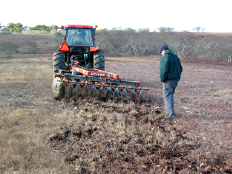
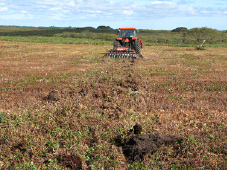
Disc harrowing (Fig. 9 and 10) can be very effective in shrub removal because it breaks up clonal shrub rootstock and destroys the roots of shrubs like oak and ericaceous species (Dunwiddie 1990, Wagner et al. 2003). Harrowing to create fire breaks in 1993, 1994, and 2002 at the Manuel F. Correllus State Forest on Martha’s Vineyard was effective for removing scrub oak by destroying rootstocks (Patterson III et al. 2005, Mouw 2002). Disc harrowing has been shown to achieve similar outcomes in closed-canopy forests. At the Frances Crane Wildlife Management Area, harrowing was effectively applied in an area of second-growth forest that was cleared of trees and shrubs prior to seeding.
There are some concerns about introducing soil disturbance to areas that in some cases were not previously used for agriculture. Concerns about soil disturbance include potential disruption of the soil integrity and microbiota, and the unpredictability of plant recruitment (J. McCumber, Interview) and the potential for soil disturbance to allow recruitment of weeds and non-native plants (Wagner et al. 2003, E. Loucks, Interview). At the Francis Crane Wildlife Management Area, harrowing promoted fast-growing herbaceous non-native invasive species including Japanese stiltgrass (Microstegium vimineum) and mile-a-minute vine (Persicaria perfoliata) in areas converted from forest (C. Buelow, Interview). Recruitment of non-native species might be reduced by soil harrowing right before seeds are added (C. Buelow, Interview), or by carefully selecting sites with a low chance for non-native species recruitment (K. Omand, Interview).
Growing season mowing of non-native species prior to seed set might help eliminate weedy species in the seedbank and encourage native grass and forb recruitment and establishment (K. Omand, Interview). In areas that recently succeeded to shrubs, soil disturbance can expose seedbanks and allow recruitment of native species. For example, harrowing in a mowed shrubland dominated by scrub oak at Middle Moors on Nantucket allowed recruitment of many grassland species from the seedbank (K. Omand, Interview, Figs. 11 & 12). In the year immediately following soil disturbance, native plant recruitment may be slowed by the competing establishment of weedy annual species before giving way to native, desirable perennial species (Clarke and Patterson III 2007, Omand, Interview).
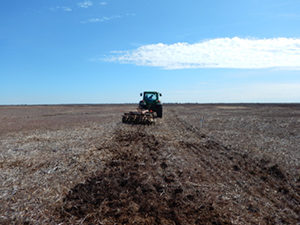
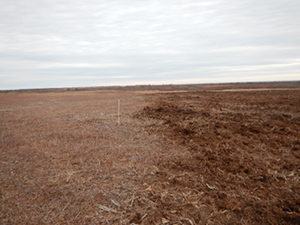
Seeding
Seeding of target species is the best way to create or reestablish grasslands into cleared areas (C. Buelow, Interview). Tree removal and soil disturbance in places that lack a seedbank or seed rain will likely result in regrowth of tree and shrubs or even recruitment of non-native invasive species (C. Neill, Interview). The benefits of seeding depend on the available seedbank and/or the potential of seed rain from adjacent grasslands. Without a native seed source, seeding is required to jumpstart native graminoids (C. Buelow, Interview). The presence of a native seedbank has the benefit of having genetics that more closely resemble those from native populations (J. Scanlon, Interview). One major factor that controls the quality and availability of the seedbank is site history, which varies widely (C. Neill, Interview). Sites with previious soil tillage have higher numbers of non-native species (Neill et al. 2007, VonHolle and Motzkin 2007). Diversity in the seedbank declines with succession from grassland to shrubland or forest (Omand et al. 2014). Existing vegetation type also controls seedbank attributes. For example, scrub oak barrens tend to have low diversity in the seedbank and lack some native forbs that are characteristic of grassland (Omand et al. 2014). Some research has been done on seedbank composition in some forest types. In plots at Middle Moors on Nantucket, Omand (Interview) tested the seedbank in land that was mowed for 20 years and recently harrowed. She found that hand seeding patches of native species showed similar species diversity compared with unseeded patches. However, for most forest-to-grassland conversions, no seedbank exists because of seed viability limitations of some species over time (C. Buelow, Interview). Therefore, seeding is typically necessary in forest conversion sites (C. Neill, Interview). Ultimately, more research is needed to understand the extent of grass and forb seed survival as well as length of persistence in the seedbank.
Seed rain occurs from travel of seeds from adjacent land, and the abundance of seed rain depends on connectivity with nearby grassland and the overall area of grassland. When forest was cleared for grassland at Frances Crane Wildlife Management Area, the area of forest cleared was twice as large as the existing grassland so recruitment alone would not have been a successful method of reseeding (C. Buelow, Interview). After tree removal at Job’s Neck on Martha’s Vineyard, some seeds were planted and some graminoid recruitment likely occurred likely because of the proximity to adjacent grassland areas (C. Neill, Interview).
There are two sources for seeds that could be planted during sandplain grassland creation from forest or shrubland: (1) commercial sources, and (2) seed collected from other grasslands. Commercially grown seed mixes typically consist of common warm-season graminoids, such as little bluestem (Schizachyrium scoparium). Commercially grown fast-growing seed helps create a grassy ecosystem in a short time period (Jones et al. 2013). Commercial sources of local seed are limited (C. Polatin, Interview), with the closest seed sources to coastal areas in the northeast US being from New York (J. Scanlon, Interview), and none currently from Massachusetts. This limits the use of local seeds in the creation of grasslands (C. Polatin, Interview). In addition, northeastern grasslands are globally rare with regionally specific species assemblages, making it especially important to expand seed that has close genetic origin to local populations (P. Wiegand & C. Buelow, Interviews).
Some organizations, including the Nature Conservancy on Martha’s Vineyard, gather seeds locally with a mechanical seed stripper (Prairie Habitats, Inc., Argile, Manitoba, Model 410i) behind a tractor (Lezberg et al., 2006). Challenges to gathering local seed include labor, having enough sites to collect from, and storing seed (E. Loucks, Interview). In addition, the life history characteristics of some plants make collecting difficult or nearly impossible. If seed collection is possible, priority should focus on collecting forbs as well as graminoids, especially rare forb species. Wheeler et al. (2015) found that forb recruitment is very low without seeding, and G. Motzkin (Interview) highlights the need to not only plant rare species, but also maintain them over time.
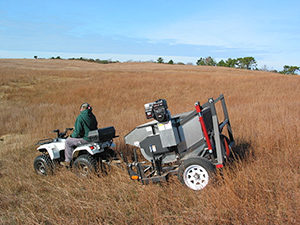
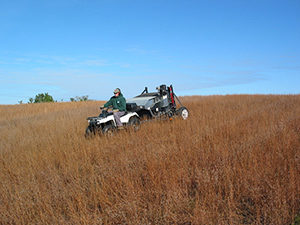
Planting methods and equipment can influence the success and rate of establishment, and come in many forms (Fig. 13 and 14). At Francis Crane Wildlife Area, warm-season graminoid seeds were coated and planted individually using a Brillion seeder, which limits wind transport and improves the proportion of seeds that establish at the site (J. Scanlon, Interview). In grasslands in Massachusetts, a Truex® warm season grass drill can also be used (C. Polatin, Interview) (Fig. 15). Hand seeding is also done for small properties, but can be labor intensive (Lezberg et al., 2006).
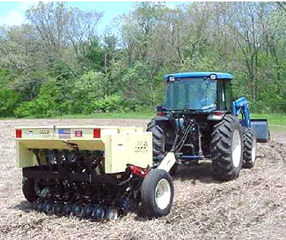
Figure 15. Truax seeder is a no-till drill for warm-season grass seeding. Photo credit: Paul Rothbart.
Seasonality and frequency are also important variables that influence planting. Precipitation and wind impact the recruitment of seeding (E. Loucks, Interview). Typically, only one season of seeding is needed. Cold and wet conditions are best for seeding for little bluestem grass, so it is often planted early in the growing season. In contrast, it is not as successful to seed warm season grasses in the middle of the growing season (J. Scanlon, interview). Some species have seeds that must overwinter before emerging, so the diversity of plants that grow the following year will fully represent all potential species that could be established (P. Wiegand, Interview).
Phase 3: Return to Maintenance Regime
After the creation of grassland, it is necessary to apply a maintenance regime in a timely manner to limit regrowth from stumps or woody tree and shrub seeds and sprouts, which may be a recurrent problem in areas converted from forest or shrubland. Grazing, prescribed burning, mowing, and vegetation removal are common management practices for maintaining grasslands, and their effectiveness hinges on existing site conditions, management variables, and whether they are applied in combination. These management tools are covered extensively in other chapters.
Logistical and Practical Constraints
Conversion from forest or shrubland to sandplain grassland has specific constraints. This conversion type is the most intensive, making cost a limiting factor. Because machinery to remove trees can be expensive, it may be more cost-effective on larger properties, and to clear one large area at once rather than smaller areas over multiple times (Raleigh et al. 2003b).
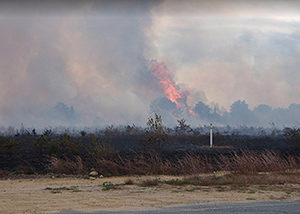
Figure 16. Camp Edwards burning in October 2013, pitch pine tree torching. Photo Credit: Jake McCumber.
Management proposals for conversion of forest to grasslands can face strong public dissent over concerns about cutting down trees. Conversion from forest to grassland requires more of a visual landscape change and has a longer phase of recovery than restoration of native grassland in previously open lands (C. Neill, Interview). Harrowing and other soil disturbance, especially in areas that have undisturbed soil, can be controversial (E. Steinauer, Interview). Seeding is often necessary, especially in second-growth forest conversions, but local commercial seed sources do not exist. Local seed collection can provide a source, but collection takes a long time and storing seeds can be logistically difficult.
The constraints on the use of prescribed fires in the post-clearing phase may be exacerbated in forest and shrubland conversions. The higher fuel content in shrublands leads to greater production of smoke makes planning and safety concerns logistically challenging and particularly for summer burns. Burning in shrublands requires more experienced prescribed fire crew due to increased burn complexity which can increase the cost and limit the window of burn application.
Summary of Outstanding Questions
This review indicated that no management practice alone can accomplish a conversion of forest or shrubland to sandplain grassland, and that the successful sandplain grassland creation hinges on the interaction of site conditions (such as presence of a seedbank) and the effectiveness of tree removal and post-clearing management of woody regrowth. The first and most intensive phase of conversion is tree and shrub removal. This can be effectively done using mechanical tree clearing in combination with other management practices such as prescribed fire, mowing, and grazing. Woody debris removal is important to avoid adding nutrients to the soil, and to lower fuel hazards. Large-scale soil disturbance such as harrowing or tilling seems to be vital to transform forest systems to grassland by breaking up root systems of undesirable clonal woody species, and create conditions that encourage germination of disturbance-dependent target species but it is best conducted in places where it will minimize recruitment of non-native plants. Seeding is generally necessary in old, closed-canopy second growth forests that are not close to other grasslands, or that might have never been open-land habitat. The first step of shrub removal should be mechanical cutting to open dense shrub thickets. Mowing, burning and other disturbance management will most effectively reduce woody shrubs when applied during the growing season.
This review identified several major ways to improve understanding of techniques commonly applied to convert forest or shrubland to sandplain grassland.
(1) Test combinations of mechanical removal of trees and shrubs with other management techniques such as prescribed fire, herbicide application, grazing, and mowing. These should be designed and monitored as field experiments;
(2) Improve understanding of how infrequent or rare plants respond to different conversion combinations. There is currently almost no information on how these species respond to management practices associated with sandplain creation from forest or shrublands;
3) Further research about conversion of forest and shrubland to sandplain grassland could involve a more detailed examination of large-scale soil disturbance in land that has been previously cleared. Experiments should compare the response of vegetation composition over time in sandplain grasslands created from woodlands on formerly-cleared areas in which the soil is harrowed compared with areas where the soil is not disturbed.
Clarke, G.L., & Patterson III, W.A. 2007. The distribution of disturbance-dependent rare plants in a coastal Massachusetts sandplain: Implications for conservation and management. Biological Conservation 136: 4–16.
Dunwiddie, P.W. 1990. Priorities and progress in management of sandplain grasslands and coastal heathlands in Massachusetts. Nantucket, MA. Report, unpublished.
Dunwiddie, P.W. 1986. Sheep grazing on Nantucket: Preliminary analysis of 1986 data. Nantucket, MA. Report, unpublished.
Jones, C.C., Dreyers, G.D., & Barrett, N. 2013. Evaluating the success of seed sowing in a New England grassland restoration. Natural Areas Journal 33: 214–221.
Karberg, J.M., & Beattie, K.C. 2009. Effectiveness of sheep grazing as a management tool on Nantucket Island, MA. Internal report, unpublished to Nantucket Conservation Foundation, Nantucket, MA.
Lezberg, A.L., Buresch, K., Neill, C., & Chase, T. 2006. Mechanical land clearing to promote establishment of coastal sandplain grassland and shrubland communities. Restoration Ecology 14: 220–232.
Mouw, A.R. 2002. The modern and historical fire regimes of central Martha’s Vineyard, Massachusetts. University of Massachusetts Amherst, Amherst, MA. M.S. Thesis, unpublished.
Neill, C., Von Holle, B., Kleese, K., Ivy, K.D., Collins, A.R., Treat, C., & Dean, M. 2007. Historical influences on the vegetation and soils of the Martha’s Vineyard, Massachusetts coastal sandplain: Implications for conservation and restoration. Biological Conservation 136: 17–32.
NYNHP (New York Natural Heritage Program). 2018. Online conservation guide for pitch pine-scrub oak barrens. Available at: http://www.acris.nynhp.org/guide.php?id=9953.
Omand, K.A., Karberg, J.M., Beattie, K.C., O’Dell, D.I., & Freeman, R.S. 2014. Soil seed bank in Nantucket’s early successional communities: implications for management. Natural Areas Journal 34: 188–199.
Patterson III, W.A., Clarke, G.L., Haggerty, S.A., Sievert, P.R., & Kelty, M.J. 2005. Wildland fuel management options for the central plains of Martha’s Vineyard: Impacts on fuel loads, fire behavior and rare plant and insect species. Amherst, MA. Unpublished report to Massachusetts Department of Conservation and Management.
Raleigh, L., Capece, J., & Berry, A. 2003. Sand barrens habitat management: A toolbox for managers. Vineyard Haven, MA. Report, unpublished.
Raleigh, L., Vernegaard, L., Egan, C., Kennedy, C., & Bellinicampi, S. 2003. Long Point Wildlife Refuge management plan.
Swain, P.C. 2016. Scrub Oak Shrubland. In Classification of the Natural Communities of Massachusetts, Version 2.0. Massachusetts Natural Heritage & Endangered Species Program, Massachusetts Division of Fisheries and Wildlife, Westborough, MA. https://www.mass.gov/files/documents/2016/08/uw/scrub-oak-shrubland-fs.pdf.
VonHolle, B. & Motzkin, G. 2007. Historical land use and environmental determinants of nonnative plant distribution in coastal New England. Biological Conservation 136:33-43.
Wagner, D.L., Nelson, M.W., & Schweitzer, D.F. 2003. Shrubland Lepidoptera of southern New England and southeastern New York: ecology, conservation, and management. Forest Ecology and Management 185: 95–112.
Wheeler, M.M., Neill, C., Loucks, E., Weiler, A., Von Holle, B., Pelikan, M., & Chase, T. 2015. Vegetation removal and seed addition contribute to coastal sandplain grassland establishment on former agricultural fields. Restoration Ecology 23: 539–547.
Other Sources
Beattie, Karen. Interviewed by Lena Champlin. Unknown date.
Buelow, Chris. Interviewed by Lena Champlin. November 20, 2016.
Crary, David. Interviewed by Lena Champlin. December 6, 2016.
Dunwiddie, Peter. Interviewed by Lena Champlin. November 14, 2016.
Foster, David. Interviewed by Lena Champlin. February 2, 2017.
Loucks, Liz. Interviewed by Lena Champlin. November 30, 2016.
McCumber, Jake. Interviewed by Lena Champlin. November 8, 2016.
Motzkin, Glenn. Interviewed by Lena Champlin. January 26, 2017.
Neill, Chris. Interviewed by Lena Champlin. November 2, 2016.
Omand, Kelly. Interviewed by Lena Champlin. Unknown date.
Patterson III, William. Interviewed by Lena Champlin. December 13, 2016.
Polatin, Chris. Interviewed by Lena Champlin. January 9, 2017.
Scanlon, John. Interviewed by Lena Champlin. November 20, 2016.
Simmons, Tim. Interviewed by Lena Champlin. December 14, 2016.
Steinauer, Ernie. Interviewed by Lena Champlin. December 5, 2016.
Weigand, Polly. Interviewed by Lena Champlin. November 16, 2016.


